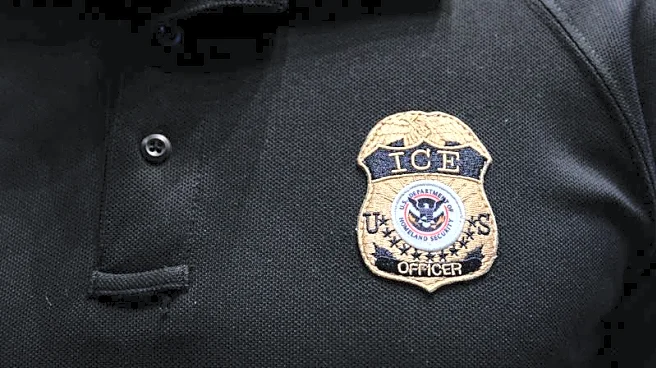What's Happening?
A federal judge in Chicago has signaled the potential release of hundreds of individuals detained during the Trump administration's immigration crackdown. U.S. District Judge Jeffrey Cummings announced
plans to release 13 detainees based on a 2022 consent decree that outlines the conditions under which U.S. Immigration and Customs Enforcement (ICE) can make warrantless arrests. The judge has given government attorneys until Friday to review a list of 615 detainees to determine eligibility for alternatives to detention, such as ankle monitors, while their immigration cases proceed. Deportation proceedings for those who may qualify for bond under the decree have been temporarily paused. The consent decree, which expired earlier this year, was extended until February and applies nationwide, although remedies have been focused in six states covered by the ICE field office in Chicago.
Why It's Important?
The judge's decision could significantly impact the lives of hundreds of detainees, offering them a chance to be released on bond while awaiting immigration hearings. This move challenges the aggressive tactics employed by ICE during the Trump administration, which have been criticized for violating the consent decree. The decision underscores ongoing legal battles over immigration enforcement and the balance between national security and individual rights. It also highlights the tension between federal and state authorities regarding immigration policies, with potential implications for future enforcement actions and legal standards.
What's Next?
Judge Cummings is expected to issue an order for the release of eligible detainees next week. The decision may prompt further legal challenges and discussions about the enforcement of immigration laws and the rights of detainees. Stakeholders, including immigration advocates and government officials, will likely continue to debate the implications of the consent decree and its enforcement. The outcome of this case could influence future immigration policies and enforcement strategies across the United States.













